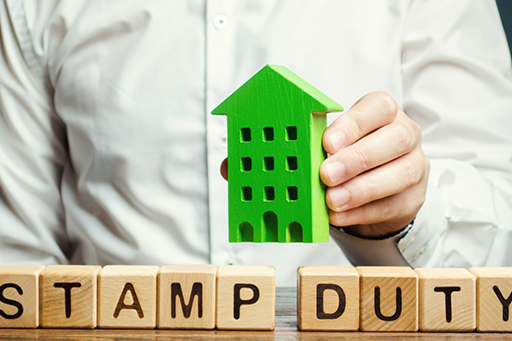Introduction

For those new to the term, a Stamp Duty is a tax that is paid on residential properties or land in England and Northern Ireland on properties costing as much as £500,000 after June 30, 2021. (Buyers in Scotland and Wales instead pay the Land and Buildings Transaction Tax and Land Transaction Tax, respectively.) Properties that cost more £500,000 will also pay a Stamp Duty at a different rate set on properties above.
Between July 1, 2021 and September 30, 2021, you won’t have to pay Stamp Duty charges on residential properties that cost up to £250,000, or up to £300,000 if you are a first-time buyer, and up to £500,000 at a discounted rate.
These rates apply to leasehold as well as freehold properties, that is, whether you are purchasing the home or property via a mortgage or outright.
If you own more than one property, you still have to pay Stamp Duty on the others. For example, if you have a second home, you pay an extra 3% to your Stamp Duty. This rate applies to properties of £40,000 or above, but it doesn’t apply to mobile homes, caravans, or houseboats.
Stamp Duty Relief and Info for First-Time Buyers
As you might imagine, this added tax might add some stress to your property shopping. However, if you’re concerned about that, it may be helpful to note that there is some relief available for buyers. You’ll want to ask real estate experts who specialise in Stamp Duty to review your situation and see if you are eligible for any form of relief.
In addition to this general Stamp Duty relief, there is also relief available for first-time buyers. In this context, a first-time buyer is classed as someone who is purchasing their first or primary residence and has not previously owned a freehold property or otherwise had a leasehold interest in a residential home or other property inside or outside of the UK. If you qualify as a first-time buyer in England or Northern Ireland as of July 1, 2021, you won’t have to pay Stamp Duty rates on properties that are worth £300,000 or less. What’s more, on properties costing between £300,000 and £500,000, you won’t have to pay any Stamp Duty on the initial £300,000; above that, you’ll pay the 5% Stamp Duty rate for the rest, up to £200,000.
However, if the property in question is worth more than £500,000, even if it is your first time purchasing a property, you will not qualify for the relief offered to other first-time buyers and you will instead have to pay the standard Stamp Duty tax rate.
UK house prices rise by 10% amid stamp duty holiday rush https://t.co/4Hy0gZIg5p
— The Guardian (@guardian) July 14, 2021
Source: Twitter - @guardian
Repayment of Higher Stamp Duty Rates
One thing you don’t want to have any doubt about is when you’ll need to repay the higher rates for your Stamp Duty as required under certain conditions such as those described above. For example, if you purchase a new main property but experience delays while selling your old one, you’ll still have to pay the higher rates for the Stamp Duty as mentioned above for those with two properties. You may not have “intended” to be “owning” two properties simultaneously, but intent aside, you now technically do and thus need to pay these higher rates until such time as you sell off the latter one.
However, if you sell or give that previous main property away within three years of purchasing that second, new property that you now count as your primary home, you can apply for relief. This comes in the form of a refund on the elevated SDLT rate in your Stamp Duty.
To be eligible for this, you’ll also need to claim that refund within three months of selling that property, or else within 12 months of your filing date for that SDLT, whichever is later.
When and How to Pay Stamp Duty
Knowing when and how to pay Stamp Duty taxes can help you avoid penalties and other problems.
Stamp Duty Land Taxes need to be paid within 14 days of filing a return. If you do not submit your return and pay your Stamp Duty Land Tax within this time frame, you may attract the attention of HMRC and incur penalties and added interest.
To pay your Stamp Duty, you’ll typically need to work with a solicitor or real estate expert trained in this capacity to ensure that your tax is paid in the proper amount and on time.
By contrast, a Stamp Duty may not be payable under certain circumstances. For example, if the price of the property is slightly within the range that mandates a Stamp Duty tax, you may wish to ask your estate agent or the seller if they would consider slightly lowering the price.
Property that has been transferred as the result of a divorce or separation does not typically qualify for Stamp Duty taxation as long as part of the home’s value is paid to your spouse or partner. Likewise, if you have deeds transferred from your name to someone else, they shouldn’t have to pay a Stamp Duty. However, this is typically intended to cover “gifts.” If you instead seek to exchange properties with this person, you will both have to pay a Stamp Duty tax on the property in question in line with its overall market value.
As you can tell, the world of Stamp Duty taxation is as varied as it is complex.
However, with the right advisement from real estate agents, you can work your way through it and up the property ladder while minimising the amount you have to pay.
Written by Tom Lawrence
We’re proud to say that we are rated one of the best Estate Agencies in Milton Keynes by “Best Estate Agents Guide 2021”. This award is supported by Rightmove and Property Academy.


